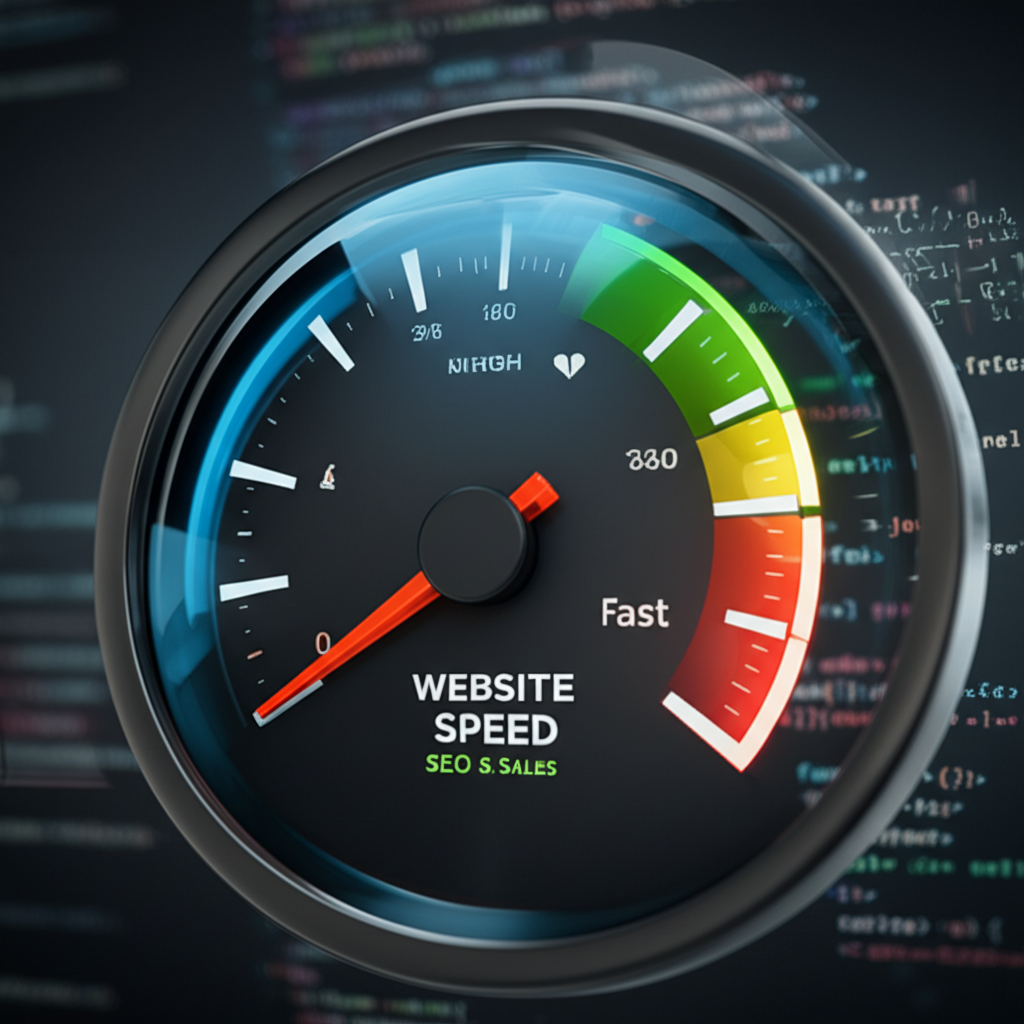- Why Website Speed Matters for SEO
- Impact of Website Speed on User Engagement
- Website Speed: A Critical Factor for Sales
- Mobile Speed Optimization is Crucial
- Optimizing Your Website for Speed: Actionable Strategies
- Conclusion: Investing in Website Speed Pays Off
Website Speed: Essential for SEO & Sales
Website speed is a critical factor for both search engine optimization (SEO) and sales. In today’s fast-paced digital world, users expect websites to load quickly. A slow website can lead to a poor user experience, increased bounce rates, and ultimately, lost revenue. This article delves into the importance of website speed, its impact on SEO and sales, and provides actionable strategies to optimize your website’s performance.
Why Website Speed Matters for SEO

Google and other search engines prioritize user experience. A slow-loading website negatively impacts user experience, which, in turn, affects your search engine rankings. Since 2010, Google has officially included site speed as a ranking factor for desktop searches. This was further expanded in 2018 with the “Speed Update,” making page speed a ranking factor for mobile searches as well. Therefore, optimizing your website speed is crucial for improving your visibility in search results and driving organic traffic.
Impact of Website Speed on User Engagement
Website speed significantly influences user engagement metrics. Bounce rate, the percentage of visitors who leave a website after viewing only one page, is directly correlated with page load time. A slow website can frustrate users, leading them to abandon your site before even exploring its content. This not only reduces the chances of conversion but also signals to search engines that your website offers a poor user experience. Furthermore, a fast website can lead to increased page views, longer session durations, and a higher conversion rate, demonstrating to search engines that users find your content valuable and engaging.
Website Speed: A Critical Factor for Sales
The impact of website speed extends beyond SEO, directly influencing your bottom line. In the e-commerce realm, a slow website can be detrimental to sales. Studies have shown a direct correlation between page load time and conversion rates. Even a one-second delay in page load time can lead to a significant drop in conversions, especially for mobile users. Potential customers are more likely to abandon their shopping carts and purchase from competitors if your website is slow and cumbersome.
Mobile Speed Optimization is Crucial
With the increasing dominance of mobile browsing, optimizing your website’s speed for mobile devices is more critical than ever. Mobile users are often on the go and have less patience for slow-loading websites. Furthermore, Google’s mobile-first indexing means that the mobile version of your website is the primary version used for indexing and ranking. Therefore, prioritizing mobile speed optimization is essential for both SEO and driving sales from mobile users.
Optimizing Your Website for Speed: Actionable Strategies
There are numerous strategies you can implement to improve your website’s speed. Here are some key areas to focus on:
Image Optimization: Large image files can significantly slow down your website. Optimize images by compressing them without compromising quality. Use appropriate image formats like WebP, which offer superior compression and quality compared to JPEG and PNG.
Minimize HTTP Requests: Each element on your webpage, such as images, scripts, and stylesheets, requires a separate HTTP request. Reducing the number of these requests can significantly improve load times. Combine CSS and JavaScript files, and use CSS sprites to reduce image requests.
Leverage Browser Caching: Browser caching allows users’ browsers to store certain website files locally, so they don’t have to be downloaded every time the user visits your website. This drastically reduces load times for repeat visitors.
Choose a Reliable Hosting Provider: Your hosting provider plays a significant role in your website’s speed. Opt for a reputable provider with fast servers and a robust infrastructure. Consider Content Delivery Networks (CDNs) to distribute your content across multiple servers geographically closer to your users.
Minify HTML, CSS, and JavaScript: Minification removes unnecessary characters, whitespace, and comments from your code, reducing file sizes and improving load times.
Enable Gzip Compression: Gzip compression reduces the size of your website’s files before they are sent to the user’s browser, leading to faster download times.
* Use a Performance Monitoring Tool: Regularly monitor your website’s speed using tools like Google PageSpeed Insights or GTmetrix. These tools provide detailed reports and recommendations for improving your website’s performance.
Conclusion: Investing in Website Speed Pays Off
Improving website speed is not just a technical task; it’s a strategic investment that yields significant returns. By optimizing your website for speed, you enhance the user experience, improve your search engine rankings, and ultimately, drive more sales. In the competitive online landscape, website speed is no longer a luxury but a necessity. By implementing the strategies outlined in this article, you can ensure that your website is fast, efficient, and poised for success.











Leave a Reply